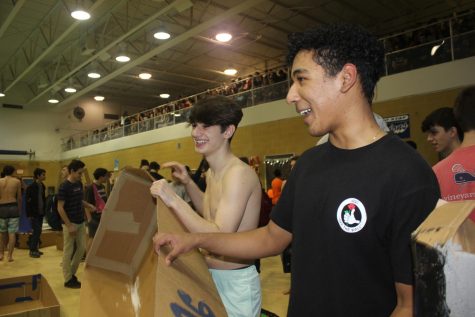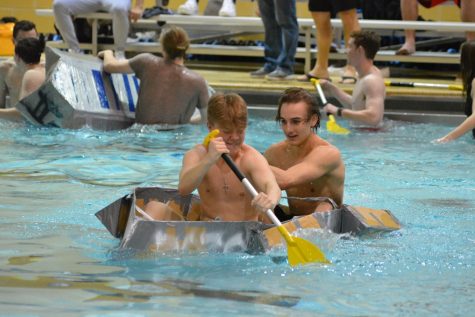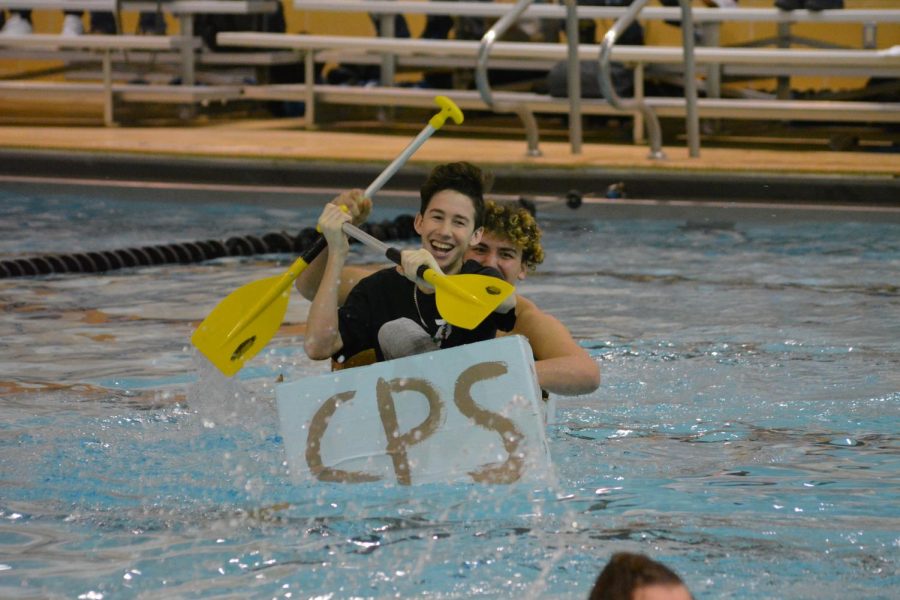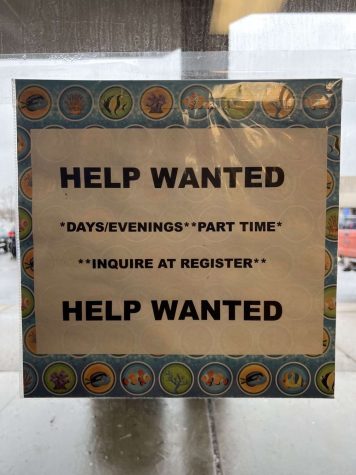Ready, Set, Row!
Classes collaborate for the annual cardboard boat races
Whatever floats your boat. Eisenhower students from previous years participate and watch the annual boat race. Some students are racing to the end of the pool to win the 3D metal Mr. Packan gives white, while others watch and cheer them on. “To see the kids come back who’ve done it before, they come back and they say, we know what works from last year and once they do it the second time around, they know what works and what doesn’t work,”auto teacher Jeffrey Kment said. “There’s a really big learning curve from actually building a boat and putting it in the water for the first time to the second time.” The boat races involve architecture, design and engineering, auto, woodshop construction, physics. The boat races are schedule to happen on Friday, March 4, 2022.
After placing their cardboard boats in the school pool, students paddle to make to the other side, frantically trying to keep their creations afloat.
“Envision it, use your mind, think about what you see and then design it,” Architecture, Design and Engineering teacher Patrick Packan said. “That really is the process used throughout life.”
Students from Design and Engineering, Architecture, Woodshop, Physics, Autoshop and Construction classes collaborate as a team to construct cardboard boats, which they will test in the pool in March. The C.T.E. program has been participated with the boat races for about eight years.
“My favorite part, personally, is the construction of building the boats,” Design and Engineering senior Connor Jones said. “I have learned a lot regarding the structure of boats and how triangles are strong and all this kind of stuff.”
The boat races inspire teamwork between different classes, as well as collaboration of new and evolving ideas.

“It was really fun. It was a learning experience to see what you could get away with on how to seal a boat,” design and engineering senior Brandon Lathrop said.
During boat building, one student from each design class joins together to form a team and they have two weeks to design the best version of their cardboard boat. Students must work efficiently and collectively in order to achieve a proficient outcome which involves a cardboard boat that can be paddled and doesn’t sink. They may only use cardboard, tape and other supplies approved by their teacher to build their boats.
The money used for supplies is allocated from government C.T.E. funds. There is not an exact dollar amount because it depends on how many kids are in each class that year. However, students are allowed to spend their own money to further decorate their boats as they choose.
“They divide that money up and give the portions to the teachers and then what happens is we take a little bit of my budget, take a little bit of Mr. DeCardenas’s and Mr. Kment’s budget and pay for it,” Packan said. “Sometimes it’s just earmarked for competitions and here we have to use it for this. This is what the state or the government says we have to use it for.”

While the boat races center around learning new skills students can take with them into their future professions or environments, they also fulfill the school board’s request of one team building activity per year. Every year, each technical class must do a project in order to support their class funding and C.T.E. requirements, according to Packan.
“We are a part of the C.T.E. program and we have to do team building competitions throughout the year, so what we’ve done over the past several years is done team building with all the classes together,” auto shop teacher Jeffrey Kment said. Students are able to show their support for the classes’ teamwork by watching the boat races take place. Packan notifies teachers via an email sign up, providing classes with the opportunity to watch the boat races occur. Approximately 10-12 classes sign up and sit in the pool area to cheer on the teams. The event is also usually broadcasted for classes that could not make it.
“All of a sudden you see students and they’re using a caulking gun and they’re gluing their seams and they’re crawling in their boat and they’re doing all these things,” Packan said.” That’s where you take this education and apply it to the real world.”
Your donation will support the student journalists of Eisenhower High School. Your contribution will allow us to purchase equipment and cover our annual website hosting costs.




